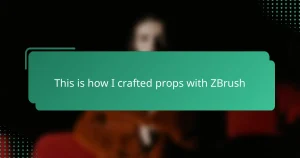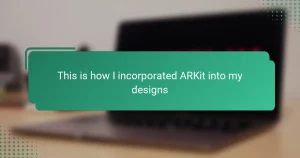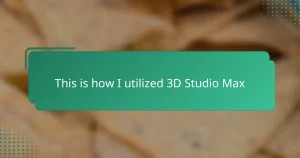Key takeaways
- VR tools enhance the creative process by providing an immersive environment, allowing designers to visualize and interact with concepts in 3D space.
- Creating science fiction props involves balancing aesthetics with functionality, making attention to detail crucial for believability in storytelling.
- Selecting intuitive VR tools is essential for maintaining a smooth workflow and capturing the complex designs needed for sci-fi elements.
- Embracing imperfections and focusing on functionality can lead to more authentic and engaging prop designs in virtual reality.
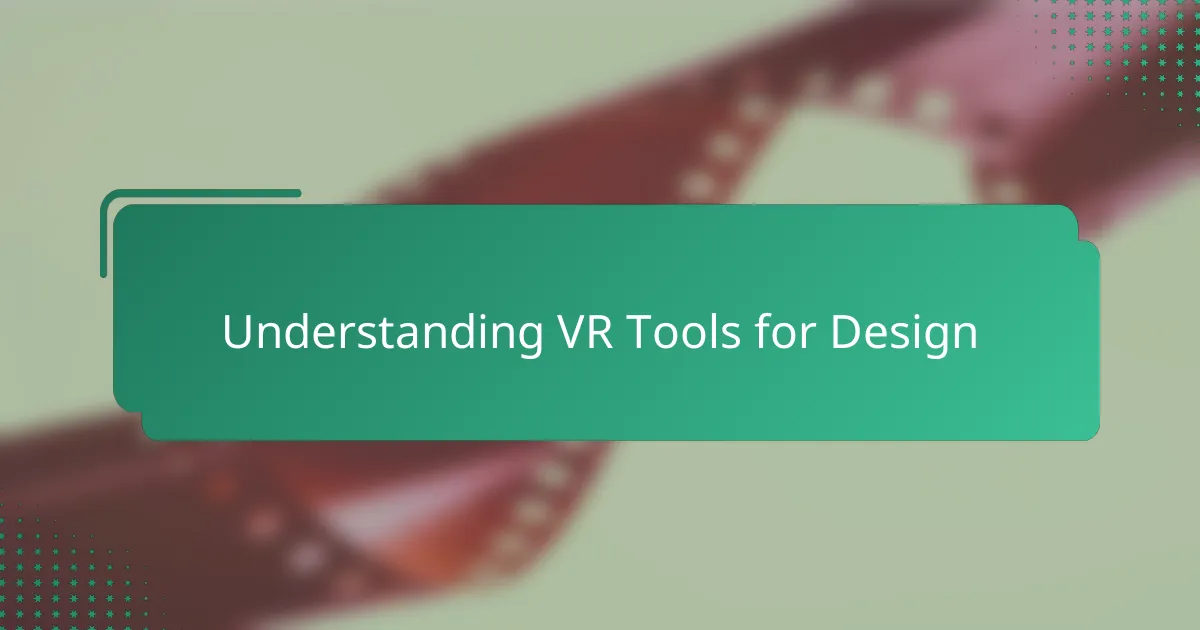
Understanding VR Tools for Design
When I first encountered VR tools for design, I was struck by how immersive they made the creative process. Instead of sketching on flat surfaces, I suddenly found myself shaping props in a 3D space—almost like sculpting out of thin air. Have you ever felt that moment when a design finally clicks because you can see and even “touch” it from every angle?
What I found especially powerful is how these tools bridge the gap between imagination and reality. In traditional design, I often struggled with translating ideas onto paper or screen, but VR offers an intuitive way to prototype and refine concepts seamlessly. It’s almost as if the technology understands my creative flow, letting me experiment freely without the constraints of usual design limits.
At times, navigating new VR interfaces felt overwhelming, but that challenge pushed me to deepen my understanding of spatial relationships and scale—critical when crafting believable sci-fi props. I asked myself, how can I make these otherworldly objects feel tangible and functional? Using VR, I could iterate faster and inject more personality into each creation, which has been a game-changer in my design process.
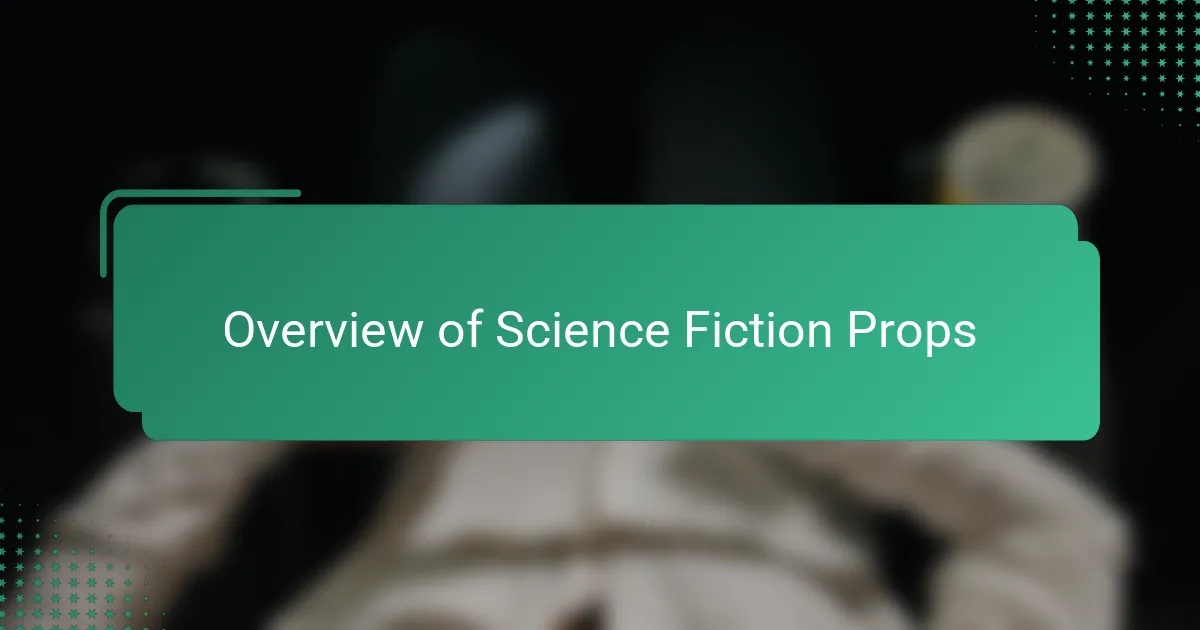
Overview of Science Fiction Props
Science fiction props have always fascinated me because they blend creativity with storytelling in such a unique way. These objects aren’t just random gadgets; they need to look futuristic while still feeling like something that could exist within their story’s universe. Have you ever noticed how the tiniest detail can make a prop believable or break the whole illusion?
From sleek helmets to intricate gadgets, sci-fi props often push the boundaries of design and technology. I’ve found that making them work on screen means thinking beyond aesthetics—considering functionality, material, and even the story behind each piece. It’s like giving life to a silent character through design alone.
What excites me the most is how these props invite the audience into a new world. They spark curiosity and imagination, making you wonder how they might operate or what future they come from. Creating something that triggers that sense of wonder—that’s the magic I strive for every time I start a new project.
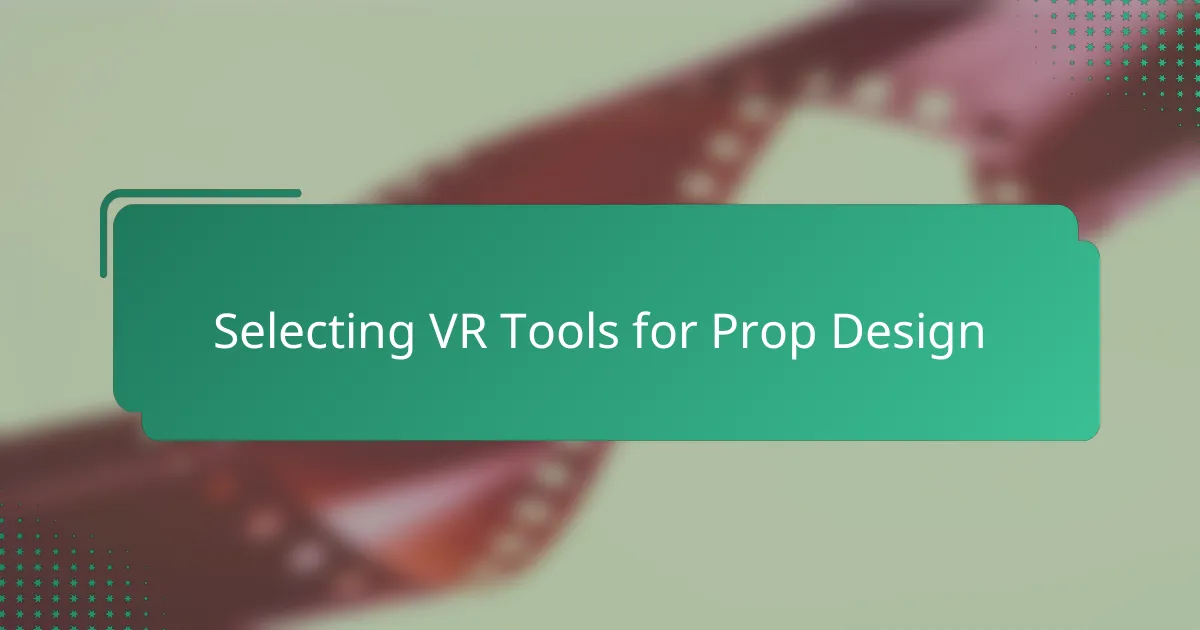
Selecting VR Tools for Prop Design
Choosing the right VR tools for prop design was a pivotal step in my workflow. I had to consider factors like ease of use, precision, and whether the tool could handle complex shapes without lag. Have you ever tried a program that just slows down your creative momentum? That frustration taught me to prioritize smooth performance above flashy features.
I gravitated towards tools that offered intuitive controls and real-time feedback because they made the design process feel more like playing than work. For example, when I discovered a VR app that let me sculpt with my hands instead of a mouse, it immediately felt like an extension of my body. That natural interaction was invaluable for capturing the organic complexity of sci-fi props.
At the same time, I needed software compatible with other design platforms, so I could easily export my models for further refinement or 3D printing. Balancing innovation with practicality wasn’t always straightforward, but finding tools that fit into my existing pipeline saved countless hours. Isn’t that the ultimate goal—working smarter, not harder?
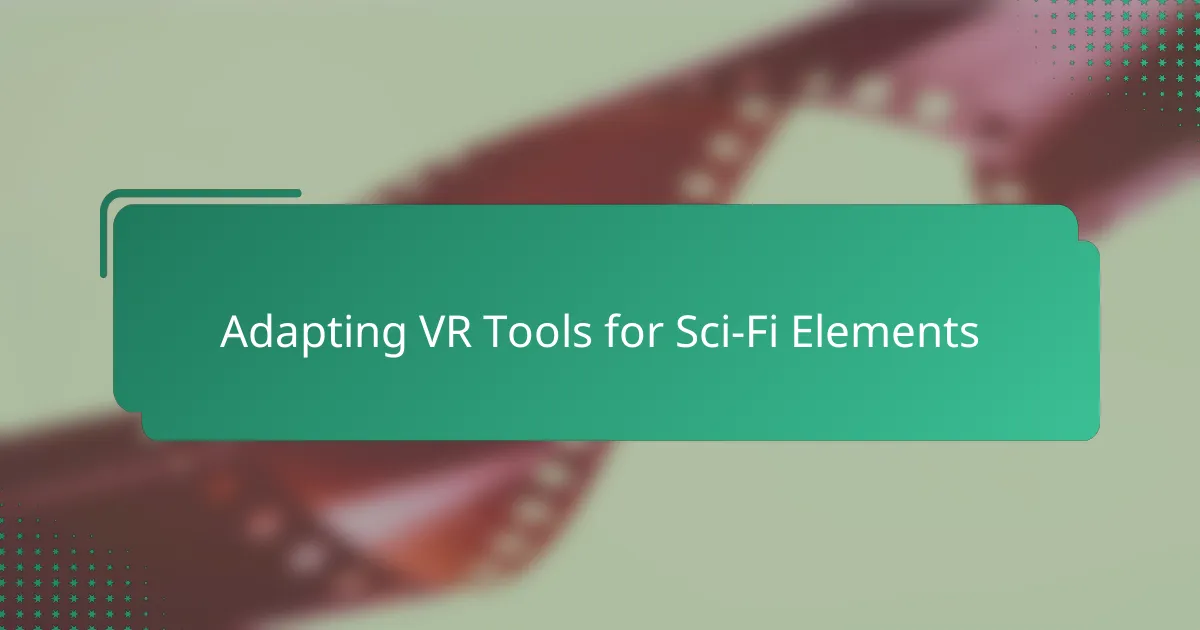
Adapting VR Tools for Sci-Fi Elements
Adapting VR tools to capture the essence of sci-fi elements meant pushing the software beyond its usual boundaries. I remember trying to recreate alien textures and unfamiliar geometries that standard presets couldn’t handle, which forced me to experiment with custom brushes and layering techniques inside the VR environment. Have you ever had to improvise because the toolset wasn’t quite built for your vision? That was exactly my experience, and it opened up new creative pathways.
One thing I quickly realized is that sci-fi props demand a level of detail and complexity that can overwhelm VR programs if not managed carefully. Balancing high-resolution sculpting with smooth performance became a delicate dance—too many polygons and the system lagged, too few and the design lost its impact. Through trial and error, I learned to optimize meshes in VR itself, which saved me from frequent exports and interruptions.
The freedom to manipulate objects in three-dimensional space allowed me to think like an inventor, not just a designer. I found myself asking, “How would this gadget function in its world?” and used VR’s interactive capabilities to simulate moving parts or light effects mentally. This immersive approach didn’t just change how I worked—it changed how I imagined what a sci-fi prop could be.
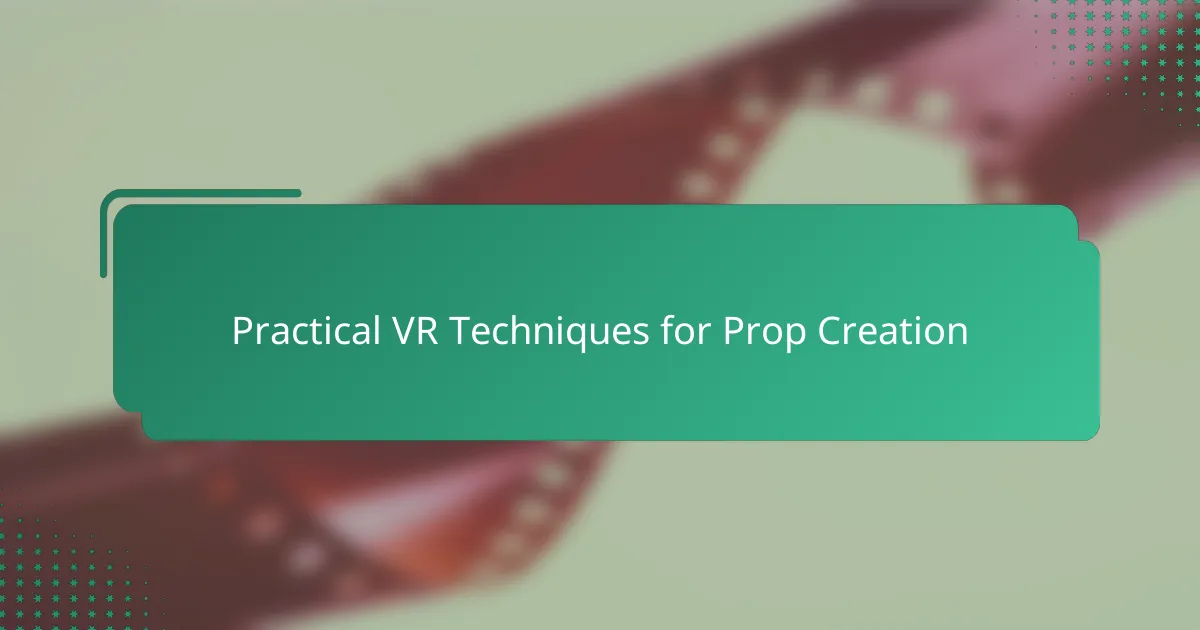
Practical VR Techniques for Prop Creation
Mastering practical VR techniques transformed the way I approach prop creation. For instance, I rely heavily on layering—building up textures and shapes incrementally to avoid bogging down the system. It’s like sculpting clay slowly, making sure every detail serves the bigger vision without overwhelming the software.
One technique I find invaluable is using symmetry tools within VR. It speeds up work on helmets or mechanical parts dramatically, but I always tweak one side slightly to add that human touch, because perfect symmetry can feel sterile. Have you noticed how subtle imperfections can bring a design to life? Those little quirks make sci-fi props feel authentic and lived-in.
I also developed a habit of switching frequently between broad strokes and fine detailing during sessions. Zooming in for intricate circuits then zooming out to check proportions helped me maintain balance in my designs. This practice keeps the workflow dynamic and prevents me from getting lost in minutiae, which can stall creativity. It’s a delicate balance—but one worth mastering.
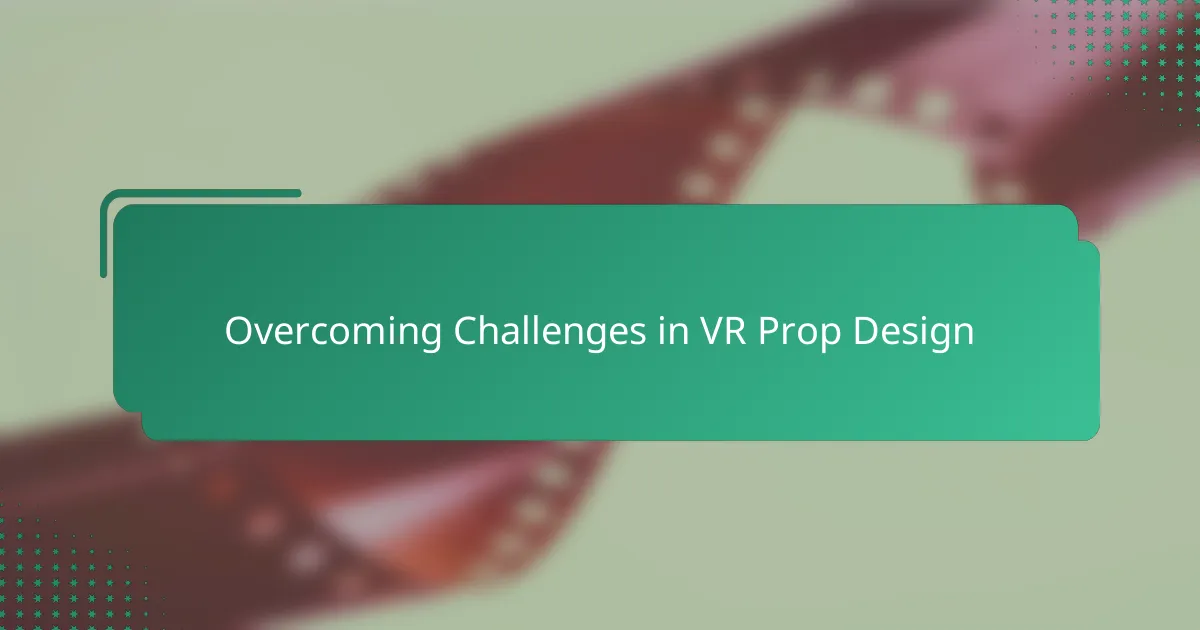
Overcoming Challenges in VR Prop Design
At first, the biggest hurdle was simply getting comfortable with VR’s unique interface. I remember fumbling through controls and feeling frustrated when my hands didn’t move as precisely as I wanted. Have you ever been that close to giving up on a tool? Pushing through that moment made me realize how patience and practice are just as vital as technical skill in VR design.
Then there’s the challenge of managing system performance. High-detail sci-fi props can bog down even the best VR setups, causing lag that interrupts creative flow. I learned to strike a balance by optimizing meshes right inside VR, trimming excess polygons while preserving complexity. That careful dance between detail and speed felt like tuning an instrument—you want everything harmonious for the best results.
Lastly, making props feel authentic meant overcoming the limitations of preset assets and standard textures. I found myself constantly experimenting—layering custom details, adjusting materials, and imagining how parts would actually function in their fictional worlds. Have you noticed how those extra efforts breathe life into a design? It’s that immersion into the story that turns a prop from just an object into a believable piece of a sci-fi universe.
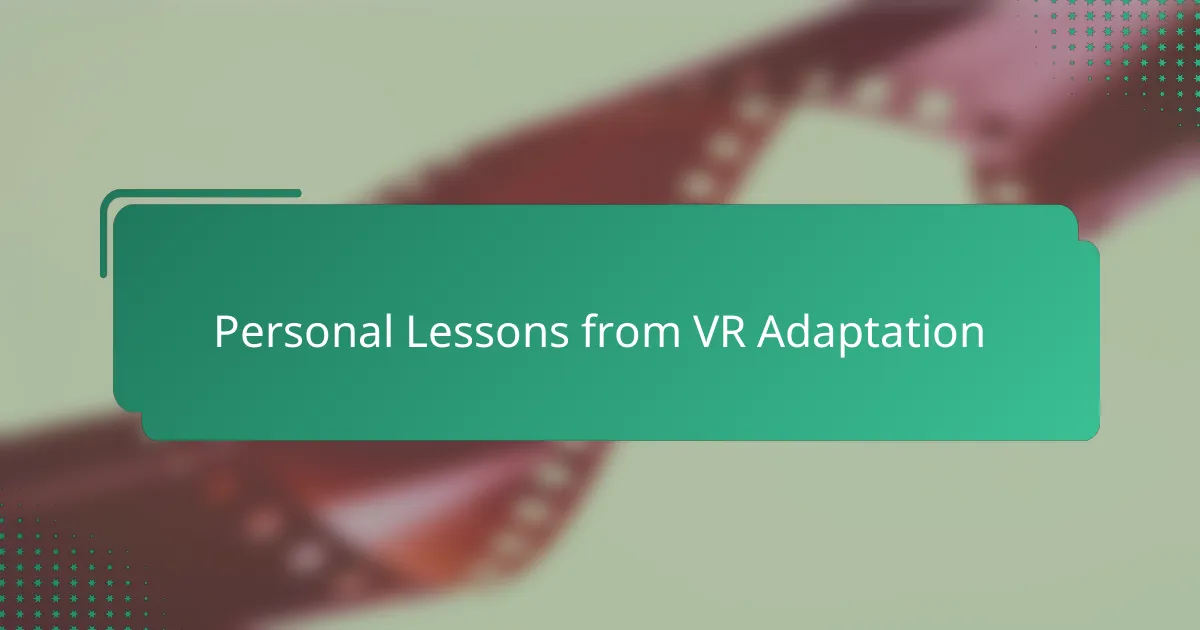
Personal Lessons from VR Adaptation
Adapting to VR tools taught me that patience truly is a designer’s best friend. I remember those early sessions where every gesture felt awkward, and frustration crept in as my hands missed the mark, yet pushing through that discomfort unlocked a new creative freedom I hadn’t anticipated. Have you ever noticed how mastering a challenging tool changes not just your skills but your entire mindset?
I also discovered that embracing imperfection was crucial. VR’s immersive environment tempted me to perfect every curve and texture, but I learned that allowing small flaws actually added personality and realism to my sci-fi props. In a way, those imperfections felt more honest—like the prop had a history, a story behind its every scratch and dent.
Finally, what struck me most was how VR shifted my thinking from static objects to dynamic, functional creations. It wasn’t just about how things looked, but how they might work or move in their fictional worlds. This perspective deepened my attachment to each design, making the process feel less like a task and more like breathing life into another reality. Have you ever felt that kind of connection with your work? With VR, I did—and it changed everything.
